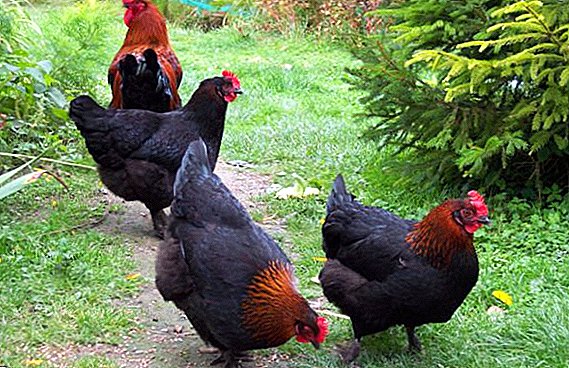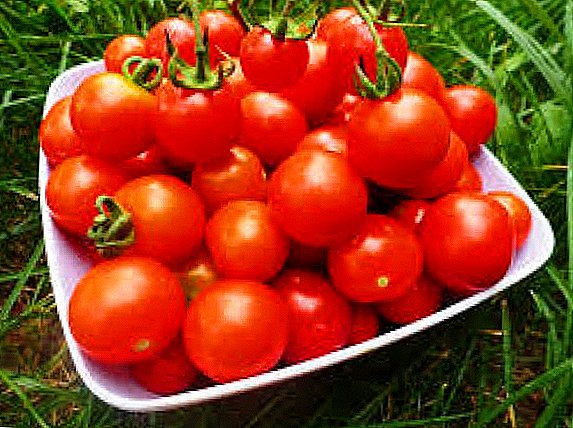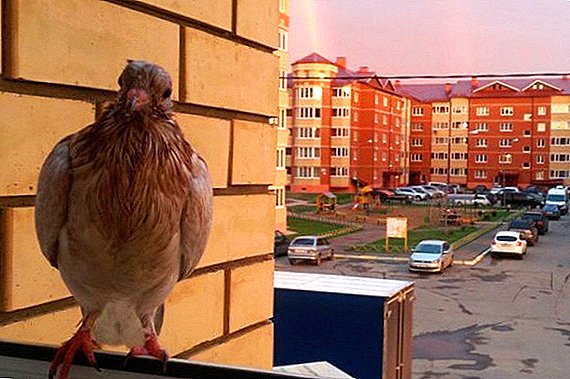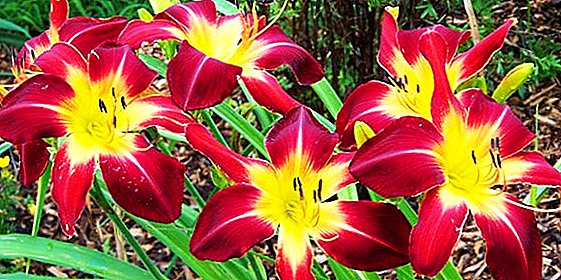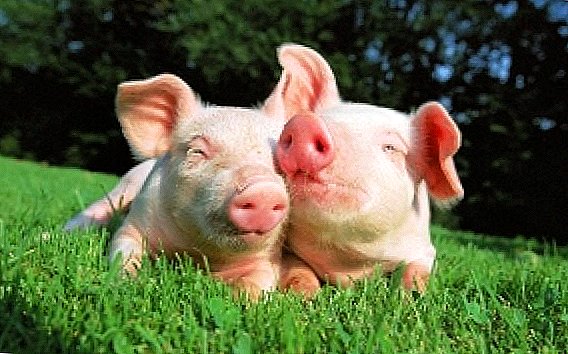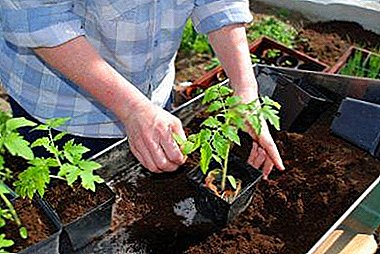
When growing tomatoes in open ground, you must comply with certain requirements. In order to get a high-quality crop of tomatoes, it is recommended to use seeds of zoned varieties, to create the best conditions for abundant fruiting.
Consider next how to plant tomatoes and what to do to grow healthy and tasty fruits.
For clarity, we offer to get acquainted in the article with an informative video about planting tomatoes in open ground.
Cultivation features
For the cultivation of tomatoes from seeds in the open ground most often choose medium and low-growing varieties. With this method, the obtained tomato bushes in the sunlight quickly catch up with plants grown by the seedling method. These tomatoes have stronger foliage and an activated immune system. They immediately adapt to the effects of ultraviolet radiation.
The benefits of planting tomatoes in the open field:
- active immune system;
- strong foliage;
- unlimited space to build root system;
- lack of stress from the transshipment of tomatoes in the soil from the pot;
- absence of black leg disease in 100% of cases.
If we talk about the shortcomings, first of all it is low germination, which occurs due to lost seeds due to inadequate care, who died from the cold and the abundance of moisture, poor quality seed.
When and where to plant tomatoes?
 In Russia, seedlings of tomatoes are planted after May 12-14, since at this time there is a minimal threat of unexpected night frosts. Do not plant in early spring, because the air and the ground are cold, and the seeds of tomatoes will sleep until favorable warm days.
In Russia, seedlings of tomatoes are planted after May 12-14, since at this time there is a minimal threat of unexpected night frosts. Do not plant in early spring, because the air and the ground are cold, and the seeds of tomatoes will sleep until favorable warm days.
It is necessary to land in the place that is protected from strong gusts of wind. Plants in open areas often die from frost and cold snaps. The most successful land for planting is the beds where zucchini, pumpkin, cucumber, legumes and late cabbage varieties used to grow. Do not plant in the place where there were peppers, tomatoes, potatoes and eggplant.
Important! It is recommended to choose beds that are well lit, open and sheltered from the wind, this will help to grow tomatoes in large quantities.
How to prepare the ground for planting?
Specialists recommend soil preparation in autumn.. To this end, after harvesting is made:
- manure;
- ash;
- compost.
It is necessary to dig up the earth and leave it in this form until spring days.. This will allow her to get enough nutrients during the winter. A fortnight before planting, the soil is loosened and watered with plenty of water. Some gardeners cover it with plastic wrap that helps warm up. When training for one reason or another was not carried out, you can plant seeds in open ground in the hole.
Seed preparation
Seeds of tomatoes must be pickled and hardened. In the first case, they are soaked in a solution of potassium permanganate for 15 minutes. Hardening is carried out as follows - the seeds are wrapped in a cloth folded in 3 layers, and placed for 1-2 days in a refrigerator where vegetables are stored. This approach allows you to accelerate the emergence and germination of plants.
You can also plant dry or germinated seeds.. In order for them to sprout, they are put on a bandage or gauze, folded in 3 layers. After that, leave in a warm place at a temperature of + 26 ° C ... + 28 ° C. Care must be taken that the fabric is not dry. After the appearance of stalks, seeds can be planted.
How to sow?
There are several basic schemes for planting tomato seeds in the open field:
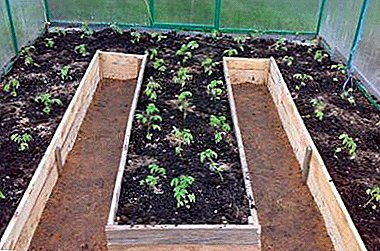 Tape. It is suitable for large areas. A trench is dug for it with a depth of 30 cm. Small pits are made in it, the distance between which should be 30-40 cm. If tall tomatoes are planted, they should be located 90 cm apart. For small bushes, 80 cm is enough. This method saves land and creates comfortable conditions for watering with a drip system and a hose.
Tape. It is suitable for large areas. A trench is dug for it with a depth of 30 cm. Small pits are made in it, the distance between which should be 30-40 cm. If tall tomatoes are planted, they should be located 90 cm apart. For small bushes, 80 cm is enough. This method saves land and creates comfortable conditions for watering with a drip system and a hose.- Square nesting. This scheme is suitable for bushy varieties of tomatoes. The minimum distance between the specimens is 50 cm, and between the squares is 80 cm. This placement makes it possible to create comfortable conditions for tillage, watering and harvesting.
- Chess. Seeds are planted in a trench on both sides in a staggered manner. This method allows you to arrange the landing, saving space.
- Tape nesting. The tape is formed from a trench, and the seedlings are planted at once on its two sides. The distance between the trenches should be large - at least 1.5 m. The distance between the bushes is 20-30 cm. This scheme is economical and suitable for small bushes.
Initial care
After the seeds are planted in open ground, it is recommended to make a small greenhouse. For this, arcs of rigid wire are stuck into the ground, onto which a film is fastened, fixed around the perimeter by bricks. Planting tomatoes should be aired at least once a day, preferably during the day, so that the temperature difference is not high.
Attention! After the first shoots have appeared, or if there is a risk of return frost, they put lutrasil on top of the greenhouse at night. This should be done only at night. After establishing the temperature of + 20 ° C ... + 23 ° C, the greenhouse is removed.
Watering and fertilizing
The most optimal irrigation option is two times a day for seven days.. In some cases, one time is enough, but at the same time it should be abundant in order for the plant to get enough water for the next seven days. The effectiveness of watering is influenced by a number of factors. In the first place - this is a type of watering at the root. This option is necessary in order to nourish the plant with the necessary moisture and at the same time keep the air humidity at the proper level.
Also, watering can be done on the furrows, with the main thing that the drops do not fall on the leaves. This is due to the fact that they turn into lenses and the sun's rays burn the plant.
 It is necessary to moisten the soil moderately - not to allow drying out and not overflowing. Ideal if the water is at room temperature or rain.
It is necessary to moisten the soil moderately - not to allow drying out and not overflowing. Ideal if the water is at room temperature or rain.
The first top-dressing root and is done 2-3 weeks after germination. It is liquid and is prepared from 5 grams of potassium sulfate and 50 grams of simple superphosphate to 1 bucket of water. Until that time, the seeds have enough substances that are in the ground. Then, the fertilization schedule is drawn up so that for the entire vegetative period the plant will receive 3-4 supplements. If the soil is scarce, then their number can be increased.
Yeast can be used as a top dressing.: for 5 l of warm water 1 kg of yeast is taken. The mass is infused during the day, after which half of the liquid is diluted with the same part of the water.
The next feeding complex. You can use one of the following options:
- any ready complex fertilizer with nitrogen;
- yeast dressing;
- 1 tbsp. nitrophoska for 1 bucket of water;
- 0.5 l of chicken or 1 l of cow dung with 2 tablespoons of ash and 20 grams of superphosphate.
Temperature conditions
Tomatoes are one of the most heat-loving crops, so at temperature:
- + 14 ° С… + 16 ° С - germination begins and seedlings form;
- + 25 ° С… + 30 ° С - seedlings actively germinate;
- + 10 ° С - growth stops;
- below + 12 ° С and above + 30 ° С - flowering stops, ovaries fall off;
- up to + 5 ° С and more + 43 ° С - the plant is quickly damaged and dies;
- below + 0.5 ° С - Tomatoes die instantly.
In the open ground grow healthy tomatoes, which have dense foliage and a powerful well-developed root system. But to get a rich harvest, you need to make efforts - to properly prepare the soil, to create all the necessary conditions for plant development.


 Tape. It is suitable for large areas. A trench is dug for it with a depth of 30 cm. Small pits are made in it, the distance between which should be 30-40 cm. If tall tomatoes are planted, they should be located 90 cm apart. For small bushes, 80 cm is enough. This method saves land and creates comfortable conditions for watering with a drip system and a hose.
Tape. It is suitable for large areas. A trench is dug for it with a depth of 30 cm. Small pits are made in it, the distance between which should be 30-40 cm. If tall tomatoes are planted, they should be located 90 cm apart. For small bushes, 80 cm is enough. This method saves land and creates comfortable conditions for watering with a drip system and a hose.
